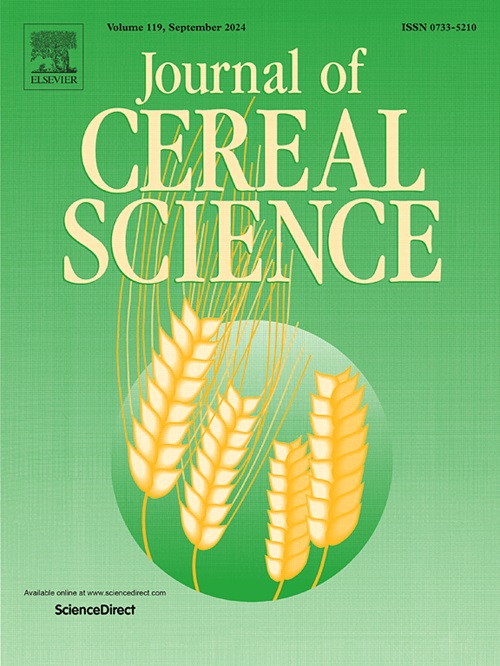Protein composition of rye varieties and a commercial mixture from an industrial mill
IF 3.9
2区 农林科学
Q2 FOOD SCIENCE & TECHNOLOGY
引用次数: 0
Abstract
The aim of this study was the characterization of protein composition of rye varieties, milling fractions and investigating the effect of proteins on rheological behaviour. We examined milling fractions produced from three rye varieties and a commercial rye mixture. We studied the most common industrial milling products (wholemeal, white flour, bran) and six experimental fractions. The protein composition was analysed by SDS-PAGE, SE-HPLC and Osborne fractionation with RP-HPLC separation. In common industrial milling fractions differences were identified mainly in HMW-secalins and albumin/globulins. However, there was a greater difference between milling fractions than between varieties. Among the experimental fractions, we identified differences from the main fractions, but their tendency and extent varied by the fraction. A higher degree of genetic variability was mainly shown in the results of albumin/globulins and HMW-secalins, however there was a greater difference between milling fractions than between varieties. By comparing the protein composition data with rheological parameters, we found that there is correlation between certain rheological values and the proteins, especially the secalins have a positive effect on the development of the dough structure.

黑麦品种的蛋白质组成和工业磨坊的商业混合物
本研究的目的是表征黑麦品种的蛋白质组成,粉碎部分和研究蛋白质对流变行为的影响。我们检查了从三种黑麦品种和一种商业黑麦混合物中产生的碾磨馏分。我们研究了最常见的工业磨粉产品(全麦、白面粉、麸皮)和六种实验馏分。采用SDS-PAGE、SE-HPLC和Osborne分馏法(RP-HPLC分离)分析蛋白质组成。在普通的工业粉碎馏分中,差异主要鉴定在HMW-secalins和白蛋白/球蛋白。然而,碾磨分数之间的差异大于品种之间的差异。在实验馏分中,我们发现了与主要馏分的差异,但其趋势和程度因馏分而异。遗传变异程度较高的主要表现在白蛋白/球蛋白和HMW-secalins的结果上,但碾磨组分之间的差异大于品种之间的差异。通过对蛋白质组成数据与流变参数的比较,我们发现某些流变值与蛋白质之间存在相关性,特别是皂苷对面团结构的发展有积极的影响。
本文章由计算机程序翻译,如有差异,请以英文原文为准。
求助全文
约1分钟内获得全文
求助全文
来源期刊

Journal of Cereal Science
工程技术-食品科技
CiteScore
7.80
自引率
2.60%
发文量
163
审稿时长
38 days
期刊介绍:
The Journal of Cereal Science was established in 1983 to provide an International forum for the publication of original research papers of high standing covering all aspects of cereal science related to the functional and nutritional quality of cereal grains (true cereals - members of the Poaceae family and starchy pseudocereals - members of the Amaranthaceae, Chenopodiaceae and Polygonaceae families) and their products, in relation to the cereals used. The journal also publishes concise and critical review articles appraising the status and future directions of specific areas of cereal science and short communications that present news of important advances in research. The journal aims at topicality and at providing comprehensive coverage of progress in the field.
 求助内容:
求助内容: 应助结果提醒方式:
应助结果提醒方式:


